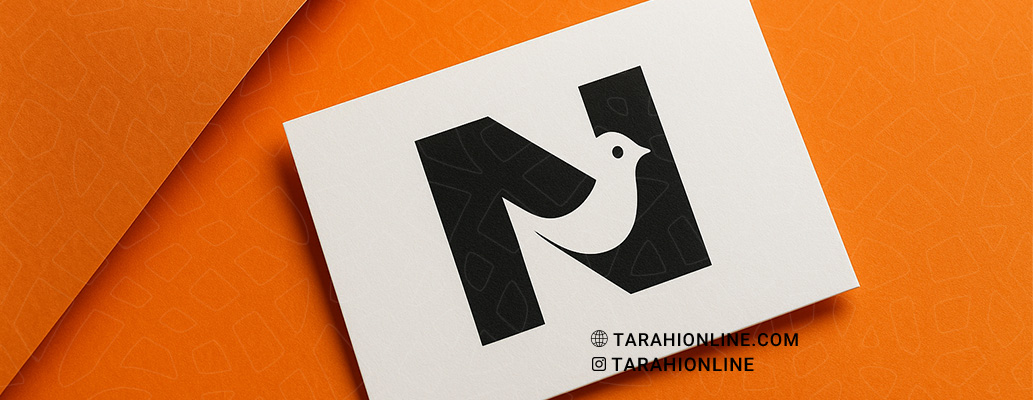
Negative space is a creative and powerful technique in logo design that can make a design visually appealing, memorable, and clever. By utilizing the empty space around or within design elements, negative space creates hidden images or dual meanings that enhance the logo’s impact. This article explores the concept of negative space, its benefits, steps to incorporate it into logo design, and key tips for creating impactful logos.
What is Negative Space?
Negative space refers to the empty or unused space around or between the main elements of a design. In logo design, this space is cleverly used to form shapes, symbols, or hidden messages that add visual interest and deeper meaning. For example, the FedEx logo, with its hidden arrow between the letters E and x, is a classic example of this technique.
Benefits of Using Negative Space in Logo Design
-
Creativity and Visual Appeal: Negative space makes a logo stand out as unique and clever, capturing the audience’s attention.
-
Dual Messaging: It allows for hidden meanings or symbols that align with the brand’s identity.
-
Simplicity and Legibility: Logos with negative space are often simple and minimal, performing well across various sizes and media (print, digital).
-
Memorability: Logos that smartly use negative space tend to stick in the audience’s mind longer.
Steps to Use Negative Space in Logo Design
A) Understand the Brand and Its Message
-
Brand Analysis: Identify the brand’s values, mission, and core message. For instance, does the brand focus on connectivity (like FedEx) or creativity?
-
Symbol Identification: Determine symbols or shapes relevant to the brand. For example, an environmental company might use a tree or leaf.
-
Ideation: Brainstorm dual-meaning concepts that can be depicted in negative space (e.g., a cup between two faces in the Rubin Vase logo).
B) Initial Design with a Focus on Simplicity
-
Choose Simple Shapes: Start with geometric shapes or clean lines to allow negative space to form naturally. Overly complex designs can obscure negative space.
-
Create Contrast: Use contrasting colors (e.g., black and white) to make negative space stand out.
-
Balance Positive and Negative Space: Ensure the positive space (main elements) and negative space (empty areas) work harmoniously.
C) Use Design Tools
-
Vector Tools: Use software like Adobe Illustrator or Figma for precise, scalable designs.
-
Test Across Sizes: Check the logo in small (e.g., favicon) and large (e.g., billboard) sizes to ensure the negative space remains clear.
-
Experiment with Colors: Use simple color palettes (e.g., monochrome or two-tone) to enhance the visibility of negative space.
D) Testing and Refinement
-
Audience Testing: Show the logo to small groups and check if they notice the negative space and its hidden message.
-
Legibility Check: Test the logo on light, dark, or busy backgrounds to ensure clarity.
-
Professional Feedback: Seek input from other designers or clients to refine the design.
Key Tips for Using Negative Space
-
Balance in Design: Negative space should not overpower the main elements, ensuring the logo remains cohesive.
-
Avoid Complexity: Overly intricate designs may make negative space hard to discern.
-
Inspiration from Successful Examples: Study logos like WWF (panda in negative space) or Amazon (arrow from A to Z).
-
Cultural Sensitivity: Ensure hidden symbols in negative space do not carry negative or inappropriate meanings in different cultures.
-
Minimalism: Negative space works best in minimal designs, so avoid clutter.
Challenges and Limitations
-
Recognizability: Negative space may not be immediately noticeable to all audiences, so it must be clear and clever.
-
Execution Complexity: Creating effective negative space requires skill and experience.
-
Printing Limitations: In monochrome or low-quality printing, negative space may not be as visible.
Maintaining the Logo After Design
-
Brand Guidelines: Create a brand guideline specifying how to use the logo and its negative space.
-
Consistent Usage: Apply the logo consistently across all media (print, web, social media).
-
Cautious Updates: If redesigning, preserve the negative space to maintain the logo’s core identity.
Using negative space in logo design is a creative technique that can transform a simple design into a clever and memorable one. By understanding the brand, using simple shapes and colors, and testing the logo in various contexts, you can create a logo that is both visually appealing and meaningful. Drawing inspiration from successful examples and using professional tools will help you effectively incorporate negative space, resulting in a logo that leaves a lasting impression on audiences.
The Tarahi Online graphic and logo design team, with over ten years of experience in professional graphic and logo design, is ready to assist you and bring your ideas to life. Contact us to submit your request or place an order.
